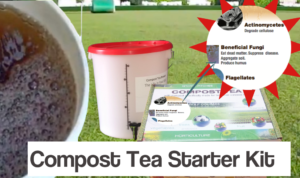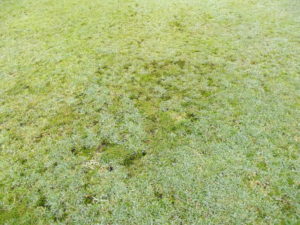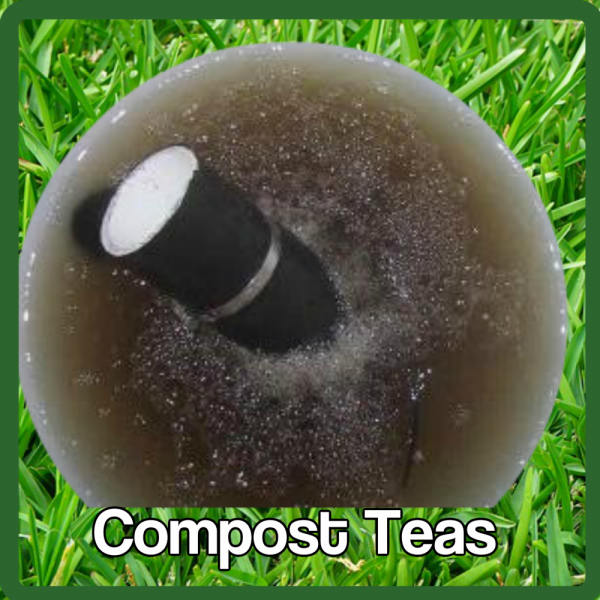Here are the recommended Greenkeeping tasks for April maintenance work for the Performance Greens Program.
April is a busy month on the greens. This month will see most UK greens opening and hopefully by now you will have seen a bit of growth on the greens as the soil temperature rises. That doesn’t mean that everything in the garden will be rosy of course, as the spring can take a long time to come in the more northern parts of the UK, meaning that greens can still look decidedly wintery until the end of April and sometimes beyond.
Let’s see what we can do about that and learn what we should ideally be getting on with this month:
Mowing
Mowing should have been going on through the winter months when conditions allowed to keep the grass topped at 8mm or so. With a bit of growth through March, the height of cut can gradually reduce from 7mm to 6mm and May should see us down to 5mm which is the minimum recommended. The further North you are the later this might be, but if you’ve kept the green trimmed at 8mm throughout the winter period and not let the grass get too long at any point then this should be a fairly simple and painless transition. Step up the mowing frequency now to at least twice weekly and more if you think it needs it.
Disease Control and Prevention
Greens that are still in the recovery phase probably will see occasional outbreaks of fusarium when the weather is mild and you shouldn’t be too complacent about these if your green is still thatchy, annual meadow grass dominated and/or apt to stay wet and soft at the surface.
Spot treatments of fungicide are still recommended if needed.
Super Concentrated Seaweed Liquid with its plethora of trace elements and natural plant inoculants is an essential helper in the soil in deep winter. Trace elements like Copper and Zinc are known to help grass plants fend off attacks from fusarium and other fungal pathogens and its bio-stimulant properties helps to keep the microbe population growing and active. You can quite happily apply this all year round as a bio-stimulant.
Fairy Ring and Localised Dry Patch
These problems are closely associated so if you have one, you will more than likely suffer the other. Localised Dry Patch (LDP) has been a bugbear of many clubs for over a decade now. The causes are well documented around this site and you can get a fairly detailed understanding of these here.
Advice on treating these problems has naturally been a bit vague as most of it was based on guesswork, but we now have a much greater understanding of the underlying biology of these problems.
Please have a look at these articles to get to grips with the problems of Fairy Ring and LDP.
Then check the feature on the top most part of the home page to find out how you can tackle curing rather than simply living with these problems.
Dew/worm cast removal
Worm casts left on the surface or smeared into the turf with the mower become ideal seedbeds for weeds next year, so try to make sure you clear them using a switch or brush frequently when conditions allow.
We have over 50 species of earthworm and only 3 surface feeding species’ produce surface casts. They feed surface detritus, taking it back underground, helping to recycle it into soil. If you leave debris on the surface you will get more casting worms, so try to keep it clean.
Worm killers are mostly unavailable now thankfully, as they did more harm than good, so it comes down to suppressing worm activity if they are causing a nuisance. Light applications of sulphur liquid or lentils (granules) can have a good suppressant effect. I’m also experimenting with some other treatments at the moment and will hopefully have further recommendations to make before the next worm onslaught in the autumn.
Scarifying
Clubs with a decent amount of heat and therefore growth, can safely consider a severe scarification this month. This will usually be carried out after application of moss treatment and before an application of spring fertiliser.
month. This will usually be carried out after application of moss treatment and before an application of spring fertiliser.
It is important that there is sufficient growth to support the recovery, so hold off on this if you aren’t seeing that yet.
A good going over with the scarifier in two directions will open up the surface to allow oxygen into the uppermost part of the sward, boosting microbial activity. In addition to the excessive thatch that is physically removed by doing this, the natural thatch degradation will be boosted and the free fertiliser factory below your green will come into play.
With that in mind have you started a compost tea regime yet?
Compost Tea
 This is the optimum time to get started on a Compost Tea program.
This is the optimum time to get started on a Compost Tea program.
On greens that have been managed in the conventional way for any length of time i.e. using pesticides and inorganic fertilisers, it’s likely that the soil microbe population will be significantly depleted. There might also be gaps in the eco-system, essentially “missing microbes”. Compost Tea provides a fresh population of the full range of microbes to bolster existing populations and even re-establish missing ones. Through repeated applications of your Compost Tea these new microbes will establish and replicate. The benefits of this full and abundant population of soil microbes will be manifold as their specific enzymes and toxins act in the soil encourage plant health for the very species you want to promote. Even in relatively healthy greens, where thatch is under control and a more natural greenkeeping program is already used, Compost Tea provides a wonderful probiotic boost, maintaining microbe diversity and helping to compensate for microbes lost through predation and prolonged reliance on pesticides and high salt index fertilisers.
Tank mix the compost tea with Liquid Seaweed for an additional bio-stimulant boost to keep your turf healthy and thriving.
More on Compost Tea here.
Moss
 Moss has been a continuing problem for many readers. Moss takes hold in any space that is left in the sward, and is particularly troublesome when there is little grass growth to speak of.
Moss has been a continuing problem for many readers. Moss takes hold in any space that is left in the sward, and is particularly troublesome when there is little grass growth to speak of.
Moss will also continue to be a problem on greens that are in the throes of the Circle of Decline, so until your green has fully transitioned into a healthy, perennial dominated one, this will continue to be a problem, albeit decreasingly so.
Now is the time to hit moss hard with a full dose of Liquid Chelated Iron. This should be followed up by another half rate application after 14 days. Scarifying can commence once the moss has been killed off. With many greens showing very high locked up iron levels, which is made worse by the use of lawn sand or sulphate of iron based moss killers (for every 100 grams of product you apply 70 grams of salt which is detrimental to water and nutrient uptake in the plants), it really isn’t helpful to add more. So, Chelated Liquid Iron is the way to go with this, as it is freely available to the plants (not locked up in the soil) and isn’t acidic at application.
Starter Fertiliser
This is the key time to get growth underway with an application of starter fertiliser preferably in granular form. To get the grass growing and to boost the underlying microbial activity I recommend an application of Soluble Condensed Molasses. This is a 10-0-4 Low Salt Organic Granular containing slow release nutrients, fulvic and humic acids and amino acids combining slow release nutrition with excellent bio-stimulant and soil building properties.
If opening day is imminent and you don’t want granules on the surface, then the equivalent liquid product, CMS Shoot is the way to go.
Aeration
Now that deep slit tining is off the menu, this month is the ideal time to do some mini soil tining, especially if you have excess thatch build up. This is a great way to get some of the build up of noxiuos gas out of the thatch layer and allow free passage for water and nutrients into the soil.
Sarrel rolling is also a very useful operation that keeps air movement going just sub-surface where the microbes roam. You can do this as regularly as you want and it is a really useful pre-compost tea application job.
It’s particularly useful for facilitating the application of any base saturation corrections, such as Calcium Carbonate or Granular Gypsum that might be required.
Base Saturation Corrections
This is also the right time to make adjustments to the underlying soil nutrition holding ability if needed. In a lot of cases greens are acidic, which makes a lot of the soil bound nutrition just that…bound so that it isn’t readily available to the plants. The Base Saturation of Cations is a measure of how well your green is set up to achieve optimum nutrient availability for plants and is included in my soil analysis service. If you have a current or recent soil analysis report I might be able to use it to advise you further on the requirement for base saturation corrections, but barring that you can easily take advantage of my done for you soil analysis and greenkeeping schedule service here.
Looking forward to Performance Greens
With the new season about to start, many clubs are coming round to the fact that they’ve been chasing symptoms for years and not tackling the underlying causes of poor green performance. Why not make this the year you finally commit fully to achieving a Performance Bowling Green? The ebook that’s caused all the fuss is well under the price of a bag of fertiliser!…more here.
Soil Analysis with done for you greenkeeping schedule.
In addition to absorbing the message in Performance Bowling Greens, why not let me do a soil analysis for you. I’ll send you a kit to take the samples and also ask you some questions about the physical condition of your green, photos etc. More details of this unique service here.
Questions Please
Of course as always, if you have any questions comments or problems, please feel free to drop me a line.


Hi John
I have followed your articles about compost tea and think it is about time I put this forward to our Bowls Committee.
They will want to know cost implications.
I understand the set up cost would be about £200 but I would like some idea about on going yearly costs.
Your help in this regard would be appreciated.
Hi John
Good to hear from you.
The starter kit will keep you going for about 12 brews and then you can replenish as follows:
Compost and Nutrients (12 brews or more) £47.25 or a double size for £78.75. Fungal additive is £45.90 for 1kg but you won’t necessarily have used all of that up as quickly.
As a rough guide you should be making a brew for under £7 each time.
More details of materials here.
If you need any help, just drop me a line
Thanks
John